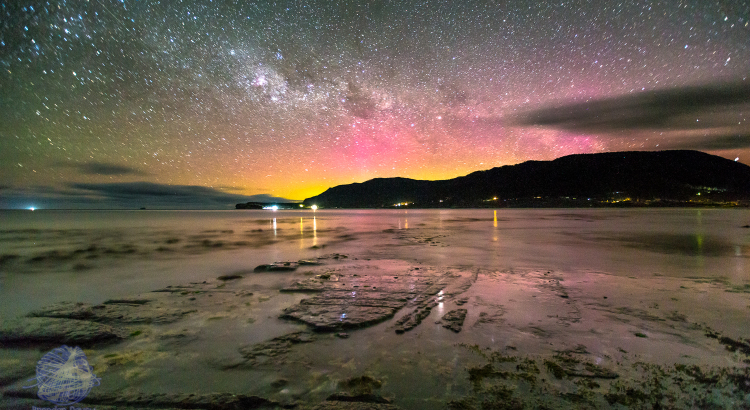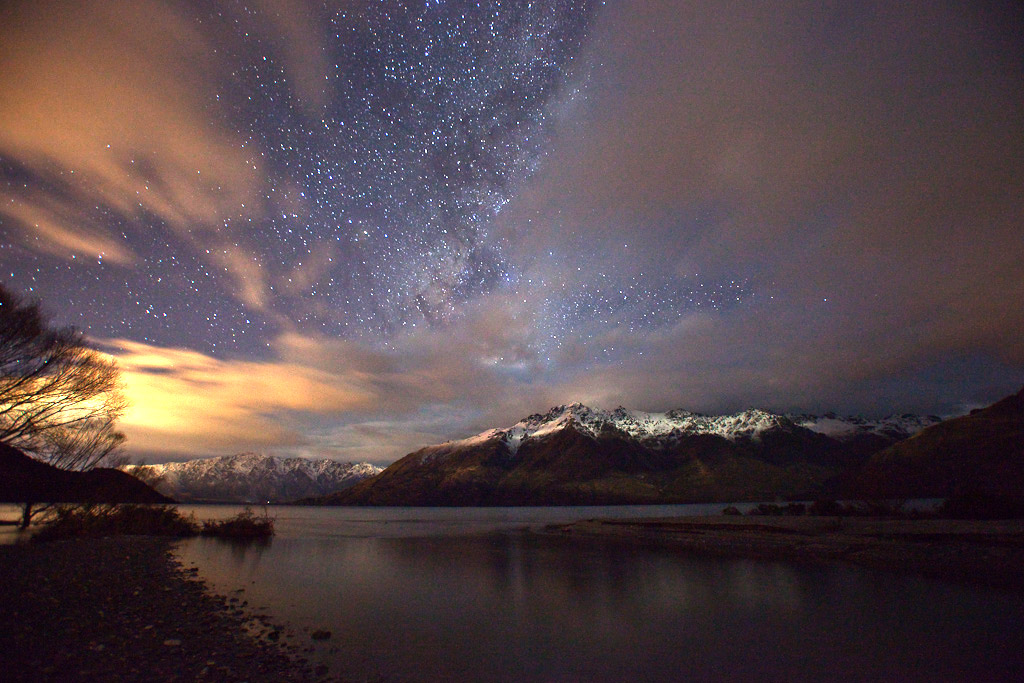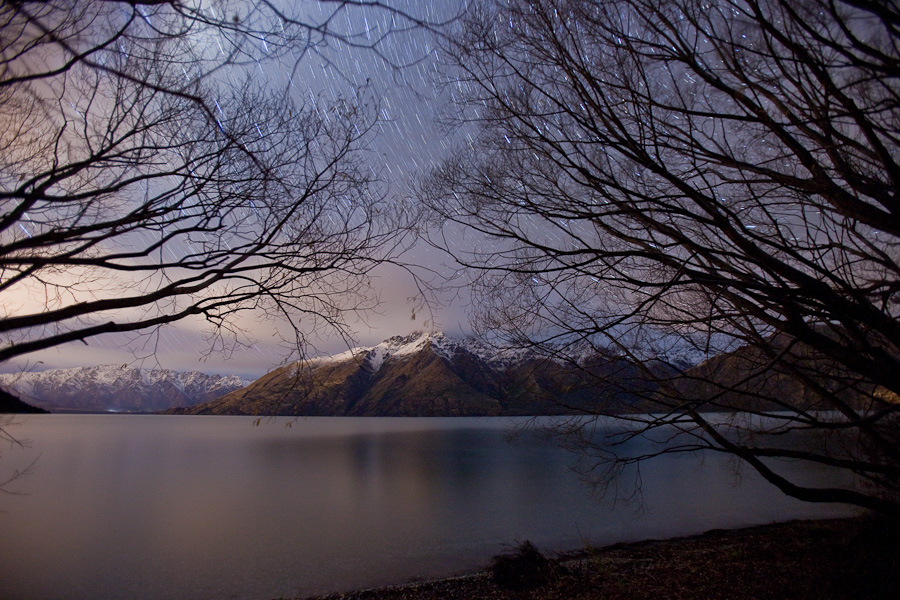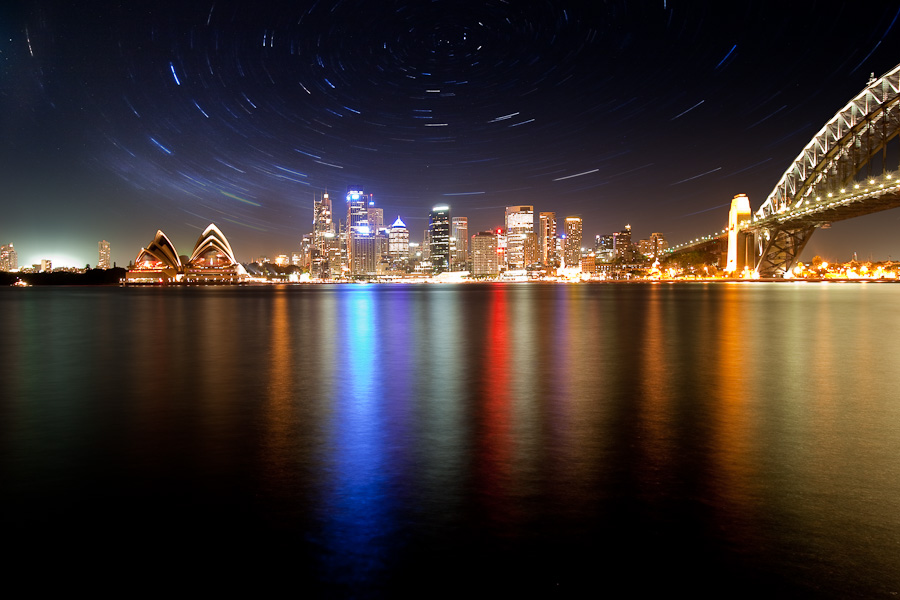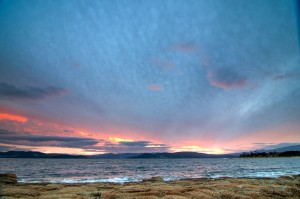
I have been a user of the 5D mark II since the day it was released, well almost. It’s a great work horse, delivering consistent images regardless of the situation. Then along comes the Nikon with the D800, and it’s smaller brother the D600. Are they any good for landscapes compared to the Canon? After some very extensive research on the web (hours of reading articles), I decided to move to Nikon, with the D800 being all the rage. So I borrowed a friends D800, and a D300s to do some basics comparisons and to get used to the Nikon bodies. What I will discuss here is how Nikon compares to Canon for low light landscape photography. The types of light levels I’m discussing are around 30sec / f2.8 / 1600ISO.
The D300s I was considering for a second body, as is of the same era as the 5D mark II. It was useful to confirm the D800’s metering as discussed below.
Live View
Canon has always had a good live view system, particularly with the frames per second delivered to the LCD on the rear of the camera. The first thing I noticed with Nikon was increased noise and significantly reduced frame rate when viewing zoomed in content on the Nikon, particularly in low light. The combination of these two factors made it very difficult to focus the camera, and I stress ‘very’, with the Canon I could focus on a star for example, while with the Nikon the frame rate was so low it was very difficult to focus, not impossible, just frustrating. I did however like the inbuilt level feature. Insuring the horizon is level at low light can be difficult.
Exposure
I’m sorry, but the Nikon is next to useless for getting the exposure anywhere near correct at extremely low light. In very low light conditions the Nikon did not meter anywhere near correct, and was metering at least 3.5 f-stops below the Canon. Having said that the Canon was also metering low as well and I was clearly in the manual settings / try and see space. It could be that Nikon allows significantly more light in through the view finder? It was nice to see that the D800 did have a shutter for the viewfinder, which was a welcome relief from the rubber boot / strap cover. To be fair on the Nikon the conditions were well outside of normal photography, and even the Canon was struggling, but closer to the mark.
Color Balance
The Canon always delivers good color balance, and very rarely do I have to set it to daylight or any other setting, even when shooting at night. The Nikon however was struggling and needed to little more help to get the balance correct, most of the pictures were turning out a very dark blue. Having said that, this is not a major issue as I always shoot RAW, and this can easily be corrected in post. Most likely the slight color balance issues were getting worse at lower light: “The D800 was noticeably sharper, while the Mark III produced more accurate colors, with a superior white balance system.” – http://www.digitalcamerainfo.com/Features/Head-to-Head-Nikon-D800-vs-Canon-5D-Mark-III.htm
Long exposure artifacts
When taking very long photos the D800 was introducing a lot of random white spots into photos, I would not consider them to be “hot” pixels, but they were quite strange. a quick Google search later and I discover it’s a nice feature: http://scottreither.com/blogwp/2012/07/01/nikon-d800-e-long-exposure-issues-problems-2/ & http://www.flickr.com/groups/1567431@N22/discuss/72157632780538698/ are two such examples.
Conclusion:
I think this video shows most of the points above: http://vimeo.com/42381520. You can clearly see the under exposure, incorrect color balance, and some noise being introduced, even at 1/50. Extend that to a 5 min exposure and it all goes pear shaped.
There is no doubt that during the day or in moderately low light the D800 will perform as well a a 5DmX, if not better. However at extreme low light I do not believe the D800 is the best choice. It’s clear, at least to me, that this is pushing the camera to it’s limits. So for the time being I will hold onto my 5DmII, and hope that Canon will introduce some of the new options in their next 5D body, along with maybe a few more Mega Pixels.
Also, D300s Frames Per Second?
This is completely not related, but a surprise to be sure. We all like to get the best out of our gear, so I always set my camera to 14-bit RAW were possible. With the D300s I noticed something interesting, the factory setting is only 12-bit RAW, thus allowing up to 7.5fps dependent on other settings. However increasing the quality to 14-bit RAW reduced the fps to 2.5 max (ouch). I rarely shoot more than one frame at a time and could not care less. However I wondered if this was just a marketing “trick” from Nikon’s to make the camera look better than it really is? How fast would a Canon body be at 12-bit RAW?
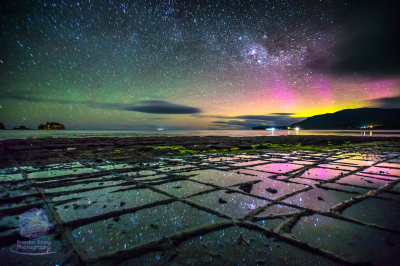 It’s taken me a while but last night the weather was favorable and I managed to finally get a reasonable Aurora over the ‘Pans’ at Eaglehawk neck. As an added bonus I also scored a little airglow as well, seen here as the green glow to the left of the picture 🙂
It’s taken me a while but last night the weather was favorable and I managed to finally get a reasonable Aurora over the ‘Pans’ at Eaglehawk neck. As an added bonus I also scored a little airglow as well, seen here as the green glow to the left of the picture 🙂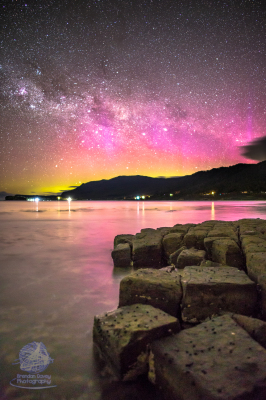 The pan formation is a series of concave depressions in the rock that typically forms beyond the edge of the seashore. This part of the pavement dries out more at low tide than the portion abutting the seashore, allowing salt crystals to develop further; the surface of the “pans” therefore erodes more quickly than the joints, resulting in increasing concavity.
The pan formation is a series of concave depressions in the rock that typically forms beyond the edge of the seashore. This part of the pavement dries out more at low tide than the portion abutting the seashore, allowing salt crystals to develop further; the surface of the “pans” therefore erodes more quickly than the joints, resulting in increasing concavity.